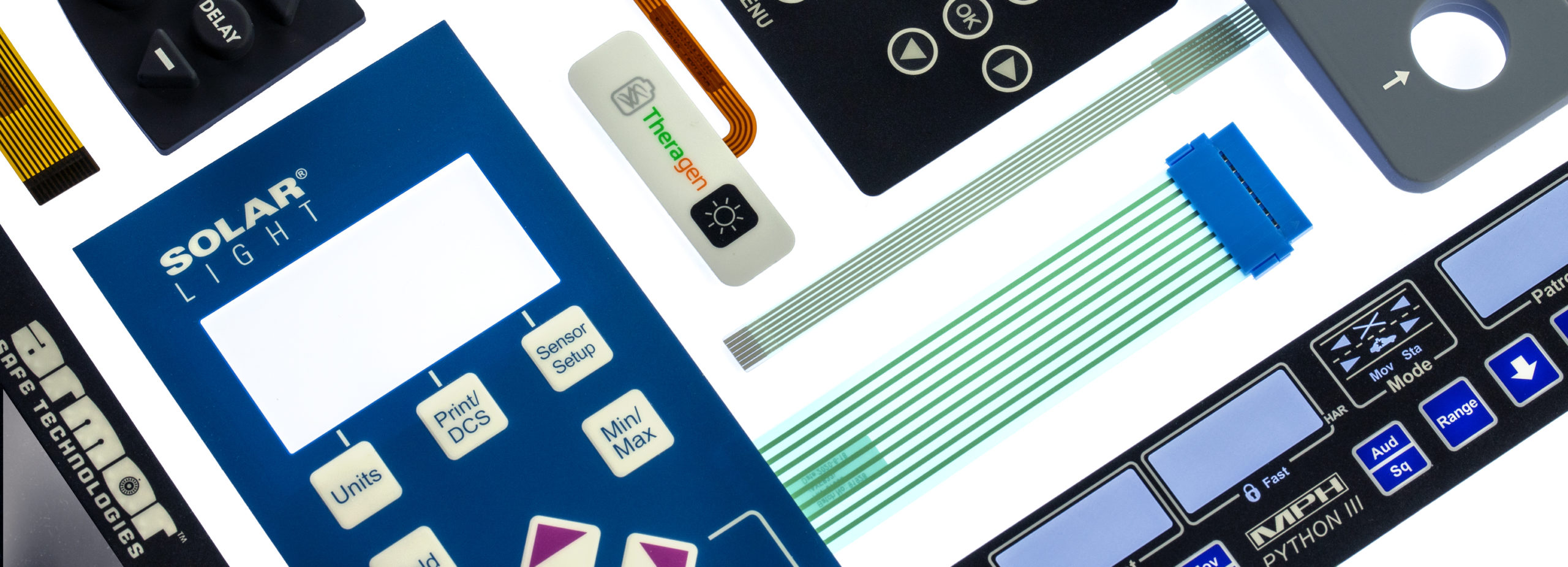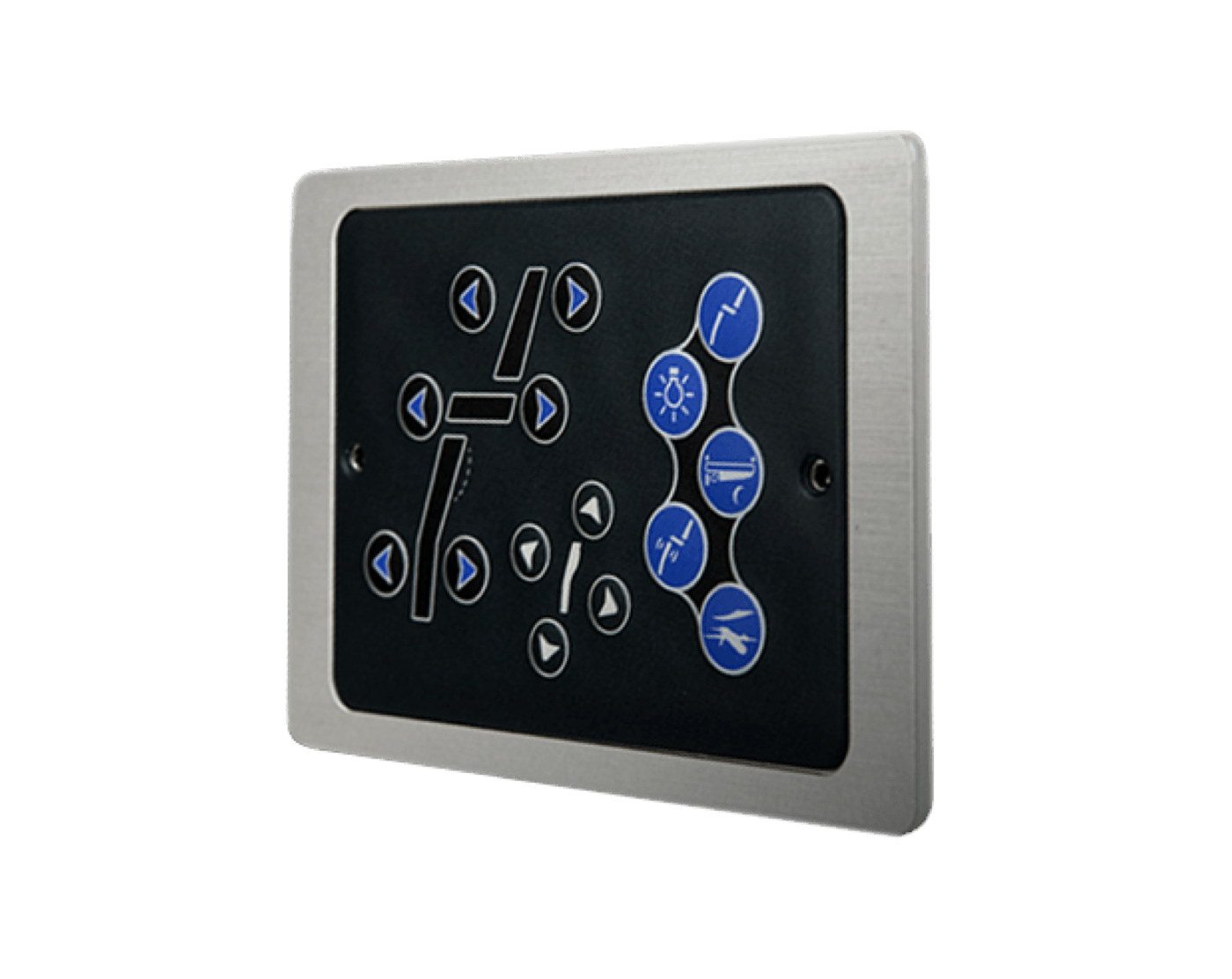Many product developers prefer working with a proven membrane switch manufacturer for custom solutions.
Many product developers prefer working with a proven membrane switch manufacturer for custom solutions.
Blog Article
Everything About Membrane Switch: Understanding Its Layout and Performance
When you believe regarding the control interfaces in modern gadgets, membrane buttons usually come to mind. Allow's explore what collections membrane switches over apart from other control systems.
What Are Membrane Layer Switches?

Their seamless nature makes them simple to clean and immune to dirt and moisture, an important function in many atmospheres. Membrane layer switches can likewise be customized concerning form, size, and graphics, permitting suppliers to develop special user interfaces tailored to particular products. And also, they're lightweight and slim, which helps in lessening the overall bulk of tools. In general, membrane layer switches play a considerable role in improving customer experience throughout a large array of applications.
How Membrane Switches Over Work
When you press a key on a membrane button, it turns on a simple yet effective mechanism. membrane switch manufacturer. The leading layer, commonly made of adaptable product, presses down onto a conductive layer beneath it.
You'll discover that the responsive responses varies based on the switch layout, using either a soft click or a much more obvious action. As soon as you release the secret, the membrane go back to its original setting, resuming the circuit and quiting the signal. This process occurs virtually instantly, making certain a responsive customer experience.
Membrane layer buttons are prominent due to their durability and resistance to dirt and moisture, making them suitable for various applications, from house home appliances to medical gadgets. Comprehending this procedure helps you value their widespread usage.
Secret Components of Membrane Layer Switches
Understanding the key components of membrane switches is basic for understanding their capability and layout. At the core, you'll find the graphic overlay, which gives the aesthetic user interface for individuals. Underneath that, there's a spacer layer that divides the circuit layers, making certain that they don't make get in touch with until pushed. The circuit layer is where the magic happens; it includes conductive traces that complete the circuit when you press the button. Another necessary component is the glue support, enabling the switch to comply with surfaces safely. Finally, the protective layer guards versus environmental variables and wear, extending the switch's life-span. Each part plays a substantial function in guaranteeing trusted efficiency and user interaction. By understanding these parts, you'll acquire insight into exactly how membrane layer changes operate and their relevance in different applications.
Products Utilized in Membrane Layer Change Design
The efficiency and sturdiness of membrane layer changes greatly depend on the products used in their style. You usually encounter polyester and polycarbonate as main substrates because of their excellent toughness and flexibility. These products resist scratches and chemicals, making them ideal for demanding environments.
The conductive layers frequently make use of silver or carbon, chosen for their dependability and conductivity. membrane switch manufacturer. Silver gives remarkable efficiency, while carbon is a cost-efficient choice. For the overlay, you could consider a matte or glossy surface, relying on your aesthetic requirements and customer experience
Adhesives play a crucial function too; they bond layers securely and assure long life. Make certain to select adhesives that stand up to ecological elements like temperature and humidity. Lastly, do not forget the significance of an excellent printing strategy for graphics, as it enhances both functionality and visual charm. Selecting the best materials will ensure your membrane switch stands the test of time.
Layout Factors To Consider for Membrane Layer Buttons
While creating membrane buttons, it's essential to consider numerous elements that affect their performance and individual experience. Begin by concentrating on the format and switch size; make specific they're user-friendly and very easy to navigate. Consider the responsive comments you wish to provide-- will customers require a noticeable click or a softer touch? In addition, assume regarding the products you'll make use of, as they'll affect longevity and aesthetics.
Don't forget the graphic style; clear labeling and color contrast are significant for exposure. Validate your design fits ecological factors, like moisture or temperature level variations, which might influence efficiency. Finally, bear in mind the importance of testing models with actual users to gather comments and make needed changes. This iterative procedure helps you improve the design, verifying it meets both useful and aesthetic requirements effectively. By very carefully considering these elements, you'll produce a membrane layer switch that improves use and contentment.
Applications of Membrane Layer Buttons
Membrane layer switches are flexible parts located in numerous applications, from commercial devices to consumer electronic devices. You'll see their influence in equipments that call for long lasting user interfaces and in devices that gain from streamlined layouts. Recognizing these applications assists you appreciate the functionality and usefulness of membrane switches in day-to-day innovation.
Industrial Devices Usage
When you're looking to boost the capability of commercial equipment, membrane layer buttons provide a trusted option that combines resilience with straightforward my company layout. These switches are ideal for extreme settings, providing resistance to dust, dampness, and chemicals. Embrace membrane switches to improve your procedures and boost overall efficiency.
Customer Electronics Combination
In the domain name of customer electronic devices, membrane switches play a necessary duty in enhancing individual interaction and gadget functionality. You'll find them in devices like microwaves, push-button controls, and video gaming consoles, supplying a smooth way to communicate with technology. Their sleek design permits easy assimilation right into numerous items, making controls instinctive and straightforward. With their ability to incorporate graphics and backlighting, you can enjoy a contemporary aesthetic that enhances the tool's total appearance. Membrane layer switches also assure resilience and resistance to dust and dampness, expanding the life expectancy of your electronics. By choosing membrane buttons, you improve not simply the performance but likewise the design of your gadgets, making everyday interactions smooth and pleasurable.
Benefits and Downsides of Membrane Buttons
While membrane switches use a variety of benefits, they also come with some disadvantages that you ought to consider. One substantial advantage is their small layout, making them optimal for space-constrained applications. They're also affordable, giving a resilient service with a low manufacturing expense. Additionally, their seamless surface is very easy to tidy, improving health in environments like health centers.

Nonetheless, there are disadvantages. Membrane switches can have a shorter life expectancy contrasted to mechanical switches, particularly under hefty usage. They can likewise be less tactile, which might affect user feedback throughout procedure. If damaged, repairing them can be difficult and frequently requires complete substitute. Eventually, their sensitivity to extreme temperature levels and ecological conditions may limit their effectiveness in particular setups. Balancing these advantages and disadvantages will help you identify if membrane layer buttons are the ideal fit for your project.
Frequently Asked Questions
For How Long Do Membrane Changes Commonly Last?
Membrane changes pop over to this site generally last in between 5 to one decade, depending upon usage and ecological conditions. You'll intend to examine elements like wear, direct exposure to wetness, and temperature changes to gauge their durability efficiently.
Can Membrane Layer Switches Be Customized for Particular Designs?
Yes, you can customize membrane switches to fit details layouts (membrane switch manufacturer). You'll have the freedom to pick colors, shapes, and formats that match your project's demands, guaranteeing they blend seamlessly with your overall visual
What Is the Price Range for Membrane Layer Switch Production?
The expense range for membrane button manufacturing usually drops in between $1 and $10 per unit, relying on variables like design complexity, quantity, and products. You can get quotes from makers to locate the most effective option.

Are Membrane Layer Switches Over Waterproof or Resistant?
Membrane buttons can be created to be water-proof or resistant, depending upon products made use of and construction techniques. If you require them for damp settings, assure you define those requirements during the design process.
How Do Membrane Switches Compare to Conventional Buttons?
Membrane layer switches are typically thinner and extra flexible than typical switches, offering a streamlined design. They're often much easier to clean and integrate, yet might not supply the responsive feedback you're used to with mechanical options.
Conclusion

Report this page